Jane Gregory Garden is AMAZING!
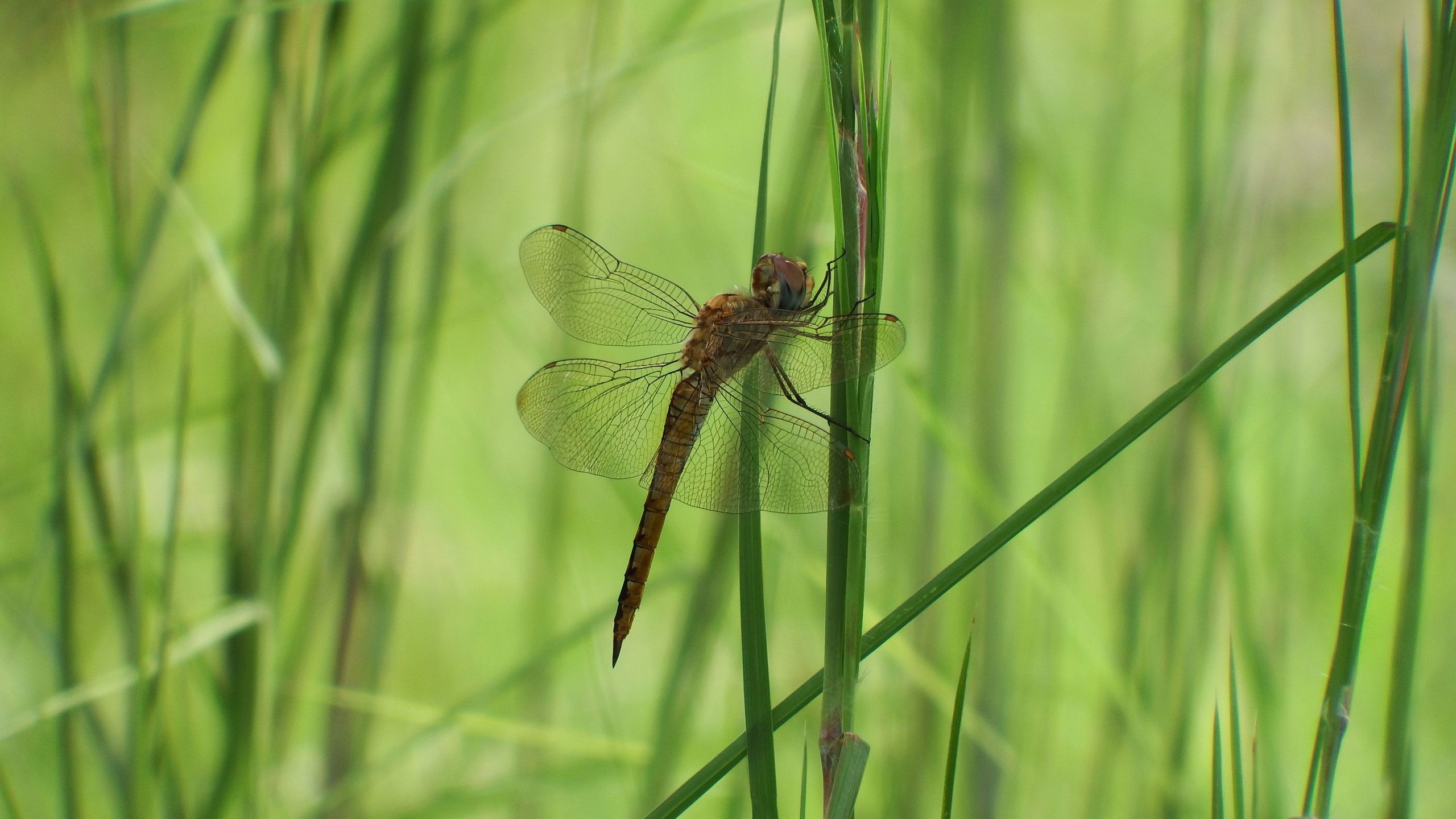
The Jane Gregory garden is a model for what can be accomplished if we make decisions with insects in mind. (I’m going to refer you to my insect rant if you don’t understand why that is crucial to our survival.) The plantings are so lovely that it is one of the prime spots in Houston for engagement photos. The stellar views of downtown are part of the appeal, but the gardens add to the magic.
The Jane Gregory garden (JGG) is part of a prairie restoration project in the Park. Many areas were seeded with native prairie plants, but before anything had a chance to get going, Harvey dumped a ton of silt. Since JGG is level with Allen Parkway, it did get flooded, but it did not get silted.
Prairies flood all the time. It’s our native ecosystem. It can handle a flood. But having avoided the silt, JGG has had the opportunity to mature. The rest of the Park will follow, it will just take a bit longer.
The reason I know that this landscape is a pollinator paradise is that I met so very many of them in such a short period of time.
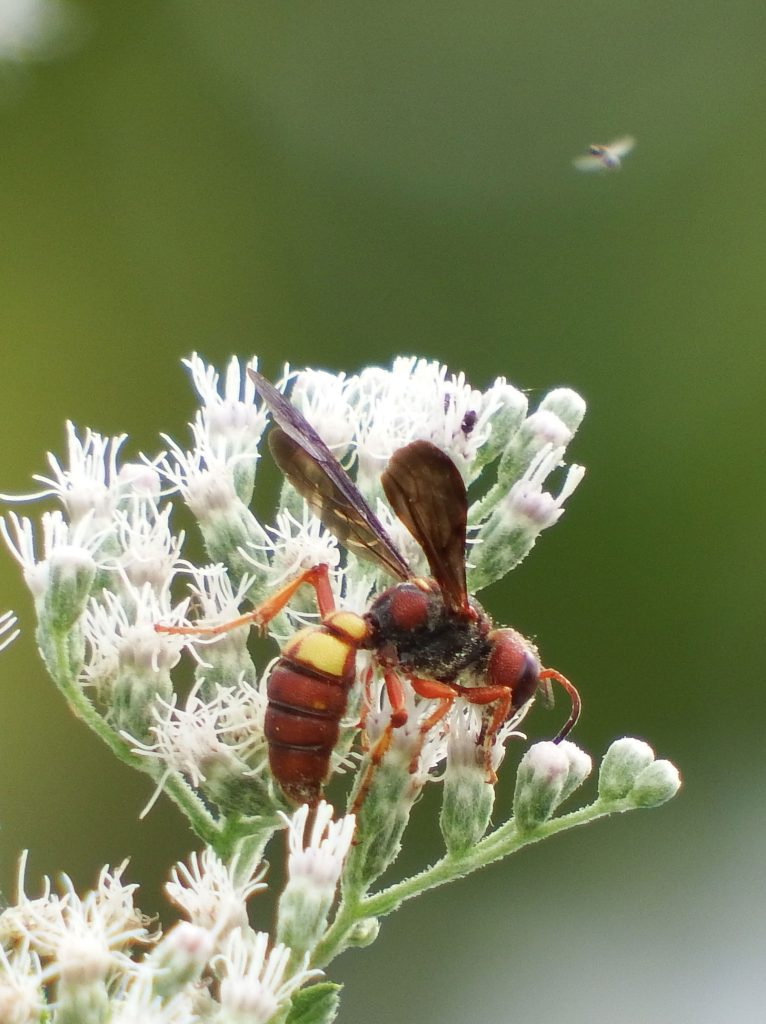
Unidentified wasp on late boneset. Notice the tiny fly in the upper right of the photo. Late boneset is a huge draw for insects.
This garden is a model for what can be accomplished in public rights of way, medians and many other parcels that could host a pocket prairie and provide desperately needed habitat for insects. I do urge you to read the insect rant to understand the urgency, but we have lost 75% of the biomass of flying insects in the last 40 years. This is a problem separate from, but impacted by climate change.
In the space of an hour, I saw more types and numbers of insects than I have found anywhere else in the Park, and this is a very accessible and manicured area. It just has the right assortment of plants for our corner of the world.
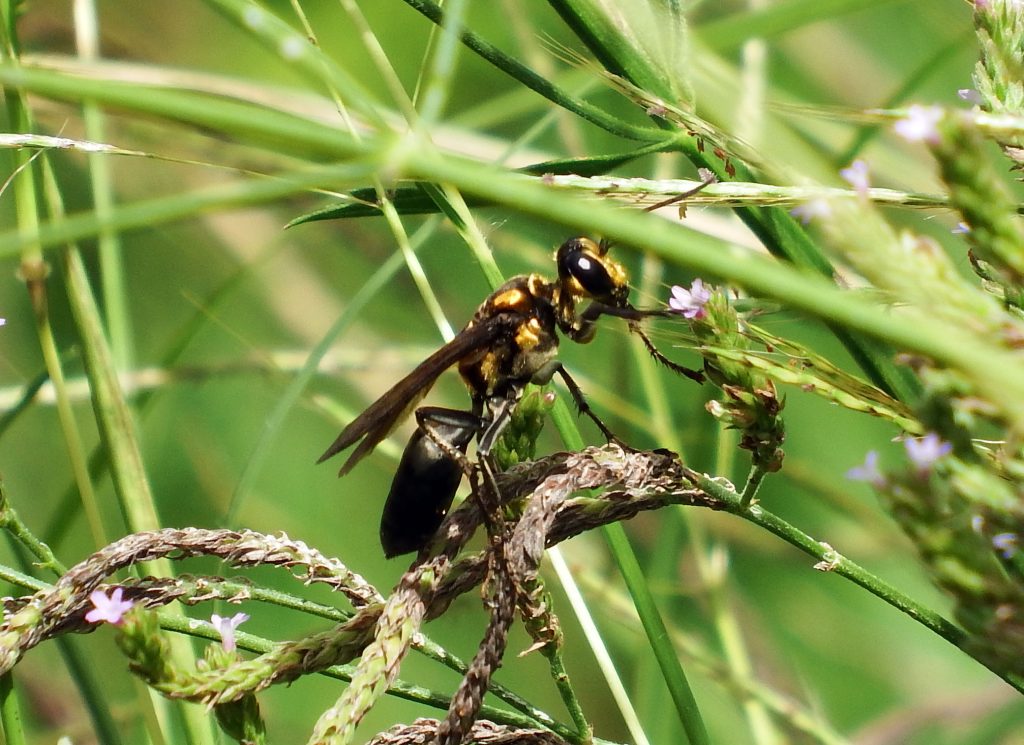
Golden reined wasp on Brazilian vervain
The two coolest insects I saw were a golden-reined wasp and a nomad bee.
The wasp was simply drop-dead gorgeous. Even though I have seen them before (and written about them). I was actually blinded by it’s beauty and forgot that I knew what it was. These wasps are genuinely metallic gold, catching the light in bright flashes.
The other insect that I spent a lot of time with is one I have never met before. I believe this to be a nomad bee. She is also called a cuckoo bee because of her habit of laying her egg in someone else’s nest. She loiters outside other bee nests as some hard-working bee (who dug the tunnel in the first place) gathers pollen, shapes it into a loaf, and lovingly places it in her tunnel and then lays her egg into this carefully curated nest.
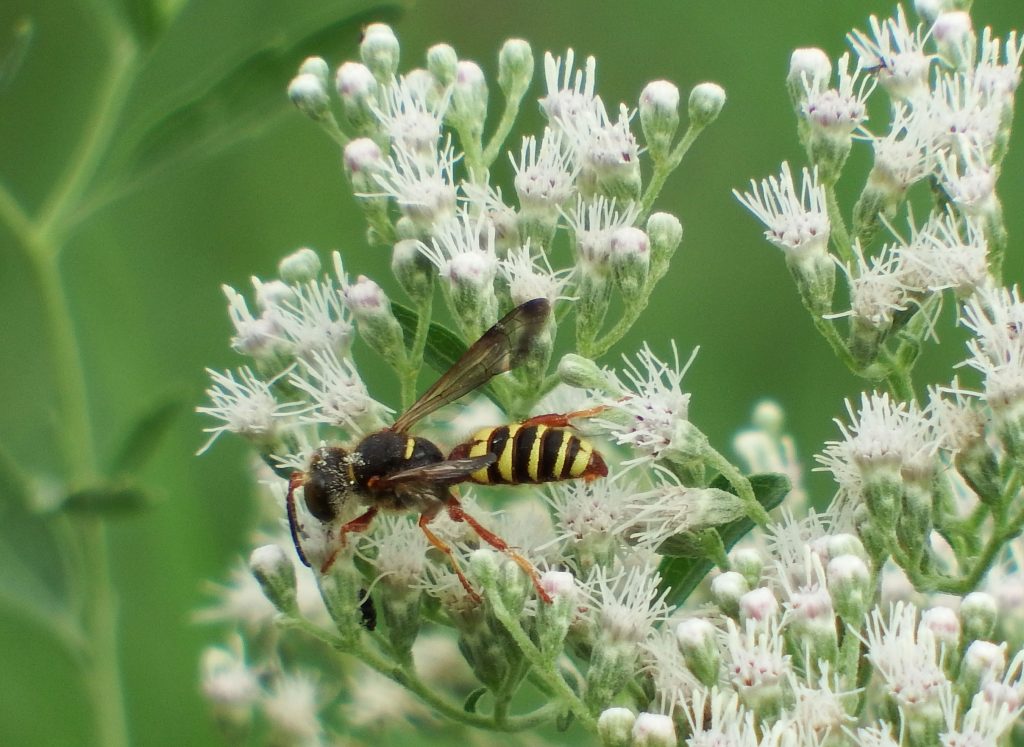
This nomad bee looks very much like a wasp, but if you look closely, you can see that she’s got quite a bit of hair, and that’s what bees have.
The nomad bee watches and waits until the nest owner’s back is turned. She then slips into the prepared tunnel, and lays one or more of her own eggs. And then, of course, it gets gruesome. Nomad bee larva come equipped with large mandibles. If they find themselves alone with the larva of the bee who dug the nest, they will simply eat that larva and then feed on the pollen loaf the original bee left behind.
If the nomad bee laid multiple eggs in the nest, there will be a survival of the fittest, red wedding kind of thing and only one larva will remain. It will be a nomad bee larva.
And yes, all this is weird and kind of gross, but also absolutely amazing. I cannot even begin to explain how complicated the nomad bee’s reproductive process is. It involves astonishing sense of smell that allows her to know if a hole in the ground has good quality pollen within and if there is an egg already in there. Her sense of smell allows her to know if the nest is being guarded. And the male and female bees will scout together to find good nests to use, leaving their own scent markings so they can find their way back to the nests they have chosen.
Nomad bees look a lot like wasps. I recently learned that wasps and bees have a common ancestor, but while bees remained vegetarian, wasps began eating meat (other insects).
I imagine that nomad bees straddle that gulf. They look like wasps, with almost no hair. Hair on bees is a pollen collecting organ. Since nomad bees don’t need to collect pollen for their offspring (other bees do that for them), they are sleek and waspish. And we’ve already discovered that as youngsters, they are carnivorous.
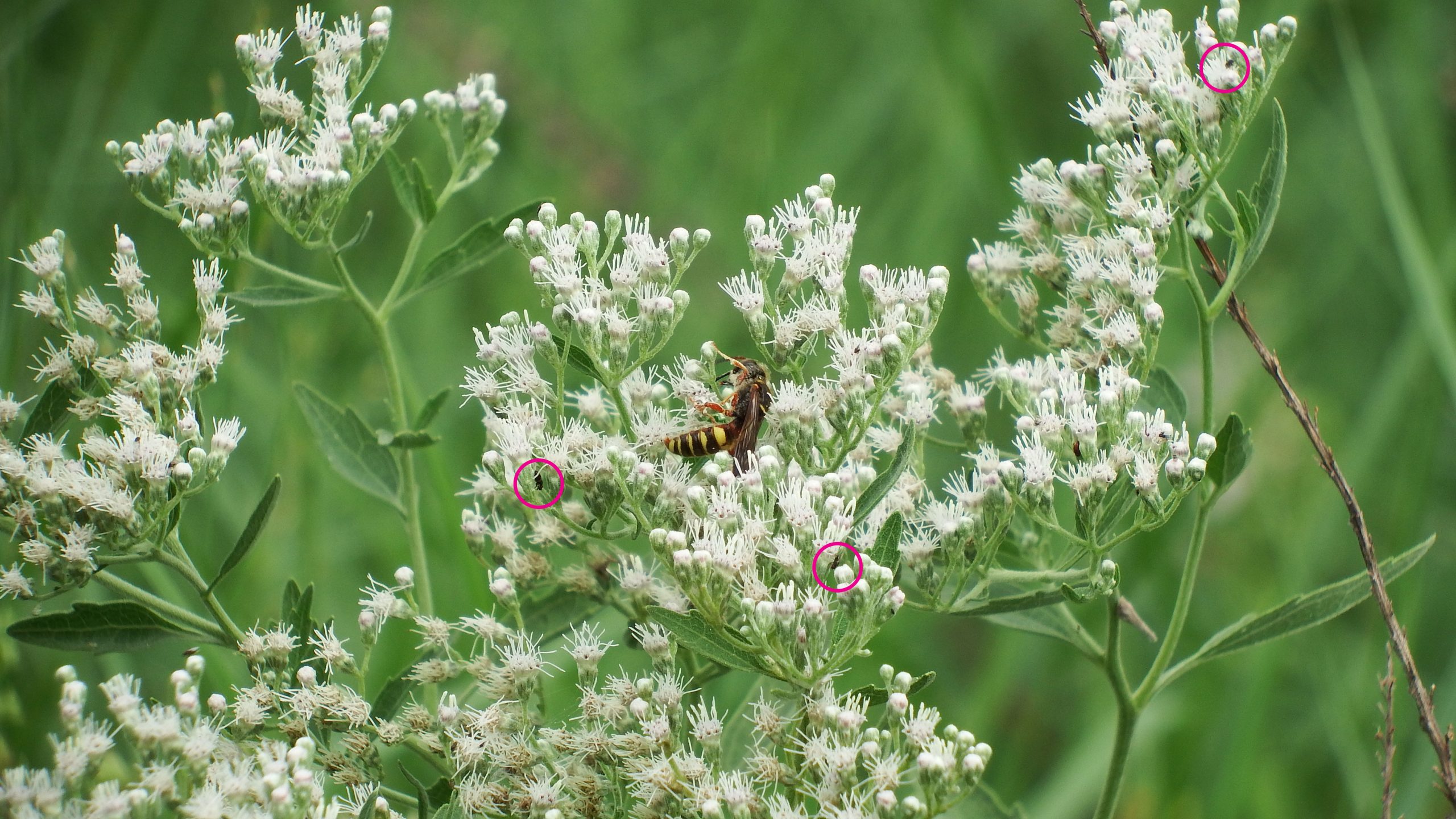
This is late boneset with a nomad bee in the middle. I have drawn red circles around a bunch of really tiny insects you can’t see until you enlarge the photo. This plant is hopping!
There were three plants that got the most attention from the pollinators. Two are native.
The biggest draw is the late boneset. It got its name because it was believed to cure dengue fever. Dengue was known as bone-break fever because the body aches were excruciating. The cure became known as boneset! We don’t use it for that anymore, but the plant is hugely bioactive in humans.
From the point of view of insects, boneset is a total winner. I took the photo above because of the nomad bee, but when I enlarged it to get a better look, I found lots and lots of tiny insects hanging around on the flower heads.
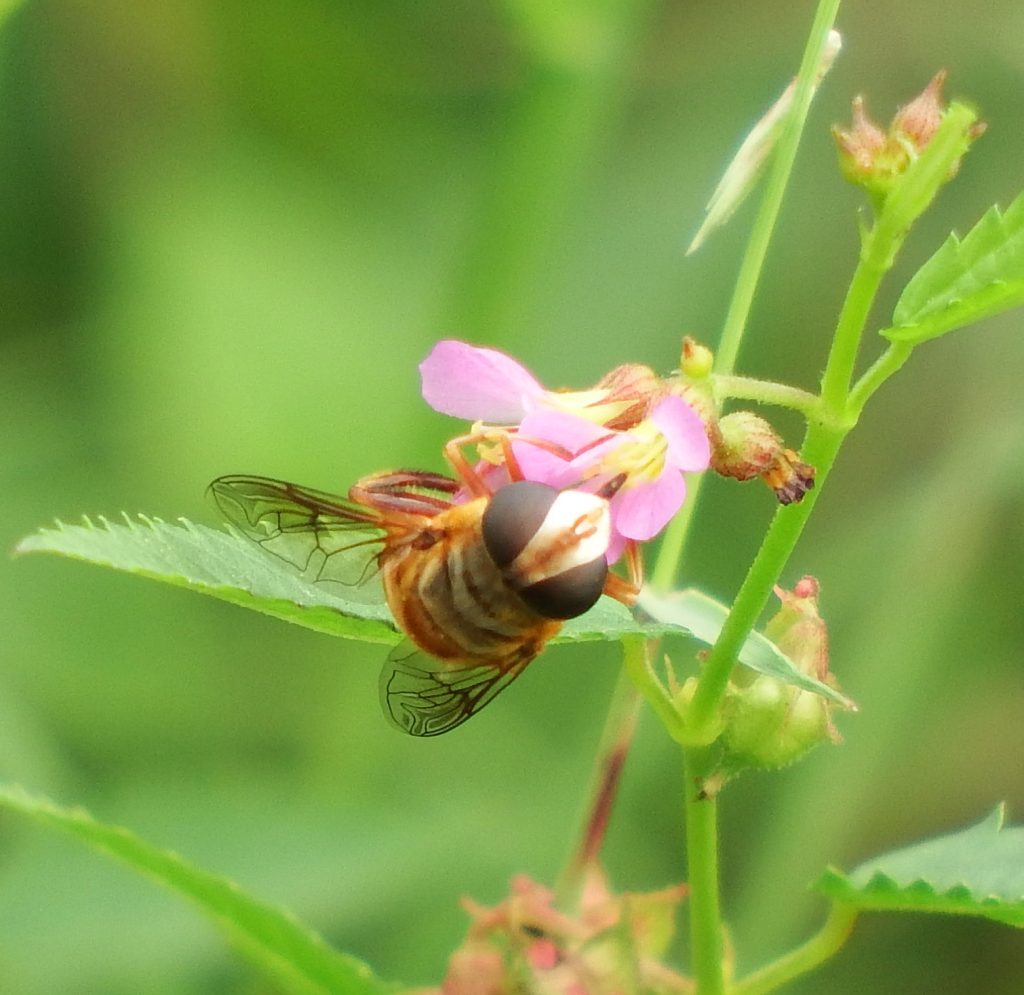
This is (I believe) a northern plushback fly. It is on a pyramid flower.
The next most popular pollinator were pyramid flowers (Melochia pyramidata). This is a small and unremarkable flower. But I have lots of photos of insects getting nectar from it. Humans want plants to be colorful and showy. And we want them in mass plantings with little interruption. Insects seem to adore small flowers that we almost overlook, frogfruit, cranebill, pyramid flowers.
The third most popular is also a flower so tiny that to our eyes, it looks like a fleck of bright purple (although all my photos turned the flowers pinksh). Irritatingly, this plant is the non-native and invasive Brazilian vervain. My position is if the insects love it, it can’t be all bad, so sort of hooray for the vervain.
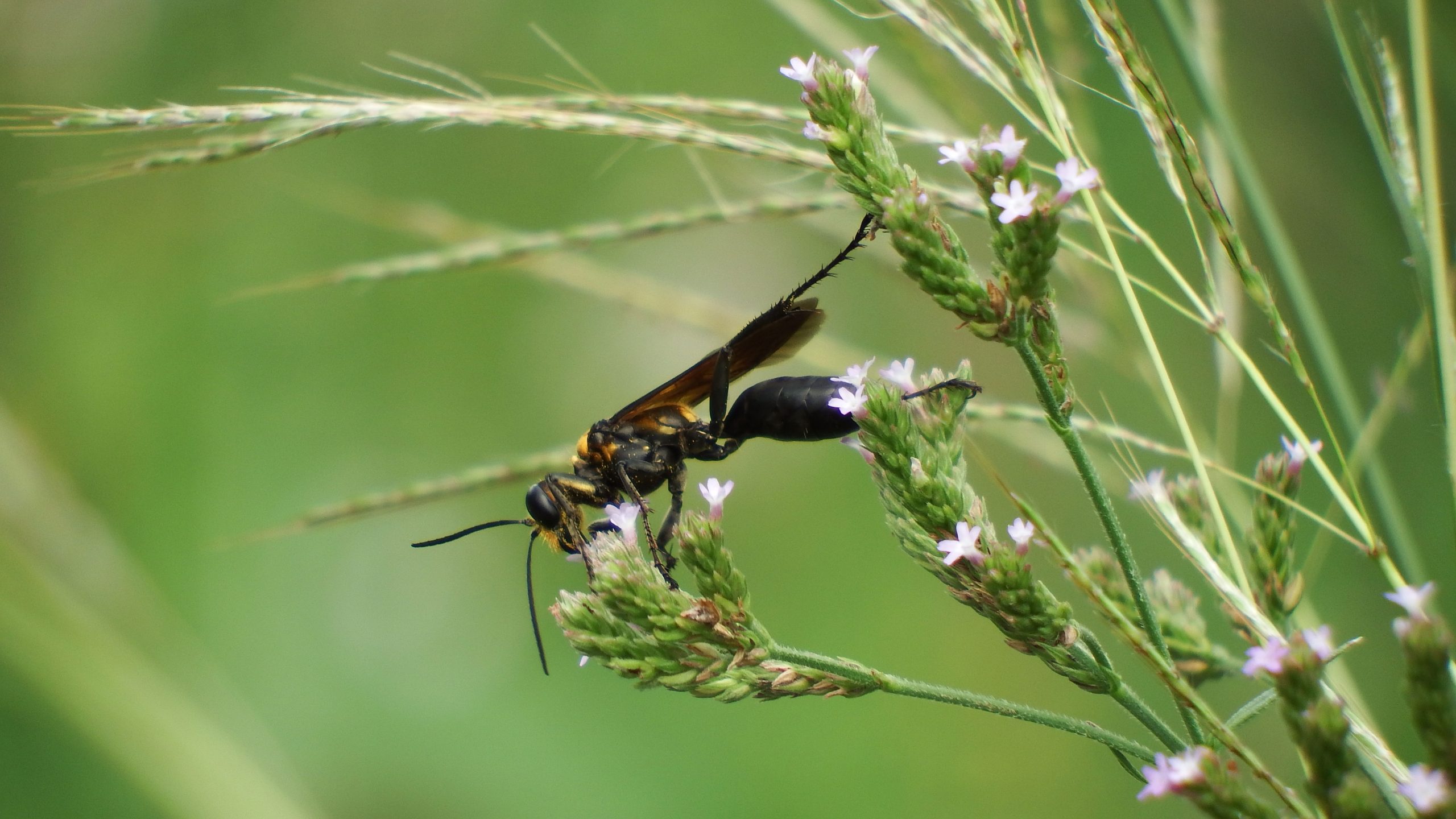
This is the golden reined wasp drinking nectar from Brazilian vervain. Those tiny flowers are much more purple than they look in this photo.
There was also a lot of American germander blooming and it, too, was fairly popular.
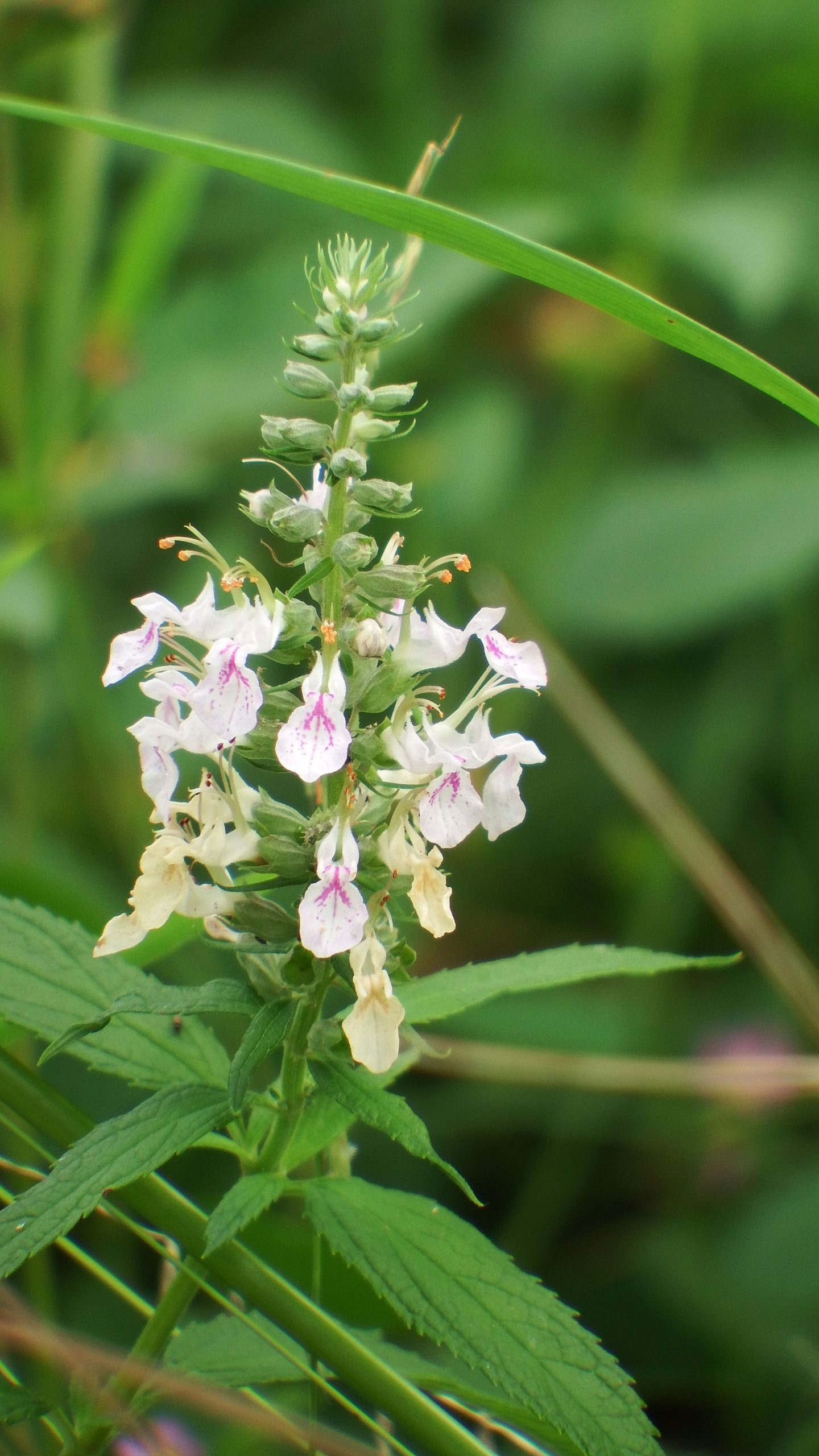
American germander, another lovely small flower that is blooming in abundance in JGG
Given all the insects around, it was no surprise that the place was humming with dragonflies. They catch insects on the wing more or less continuously.
There were bunches of saddlebag dragonflies. I couldn’t get a photo of them because they never stop moving, but if you have been outside in Texas in the summer, you know the ones. They look as though they are carrying missiles under their wings. It is simply dark wing coloring that makes these dragonflies look as though they have tumors on either side of their bodies. They are shaped just like other dragonflies.
Saddlebag dragonflies are amazing fliers. They almost never land and many of them migrate long distances.
I also saw two wandering gliders. It’s a pretty common dragonfly, but I haven’t seen one in the Park before.
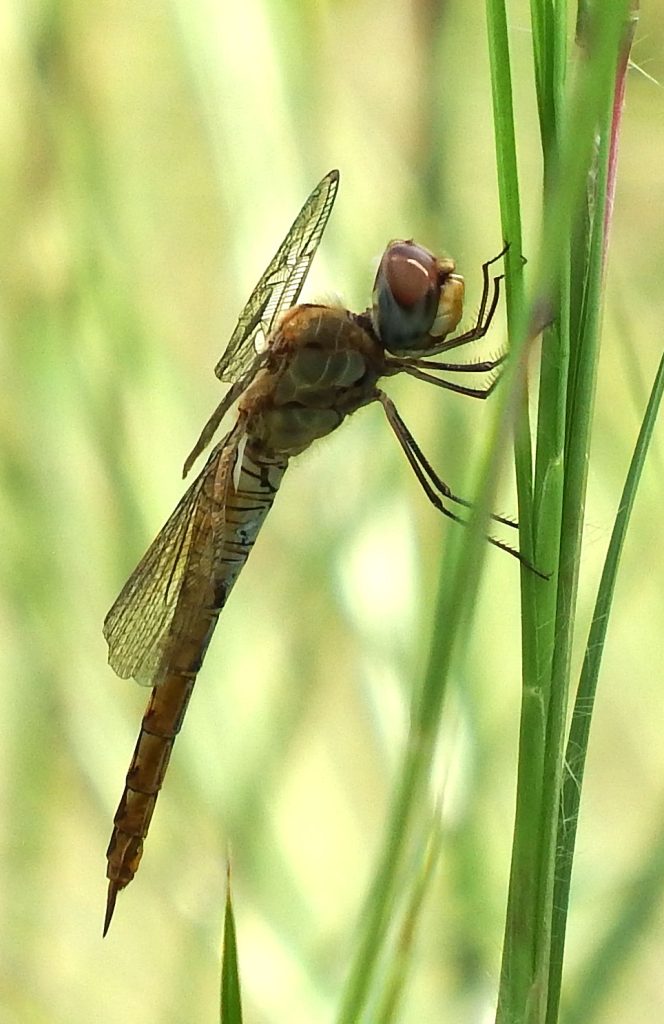
Wandering glider. The photo at the top of this post is the same insect from a different angle.
Rounding up the interesting insects I saw in my hour at JGG are a bumblebee (it is a shame that seeing a bumblebee is now cause for excitement; some species are now endangered and all of them are threatened and in startling decline) and what I think is a northern plushback fly. It looks a lot like a bee at first glance, but those eyes are all wrong! That photo is above, where I talk about pyramid flowers.
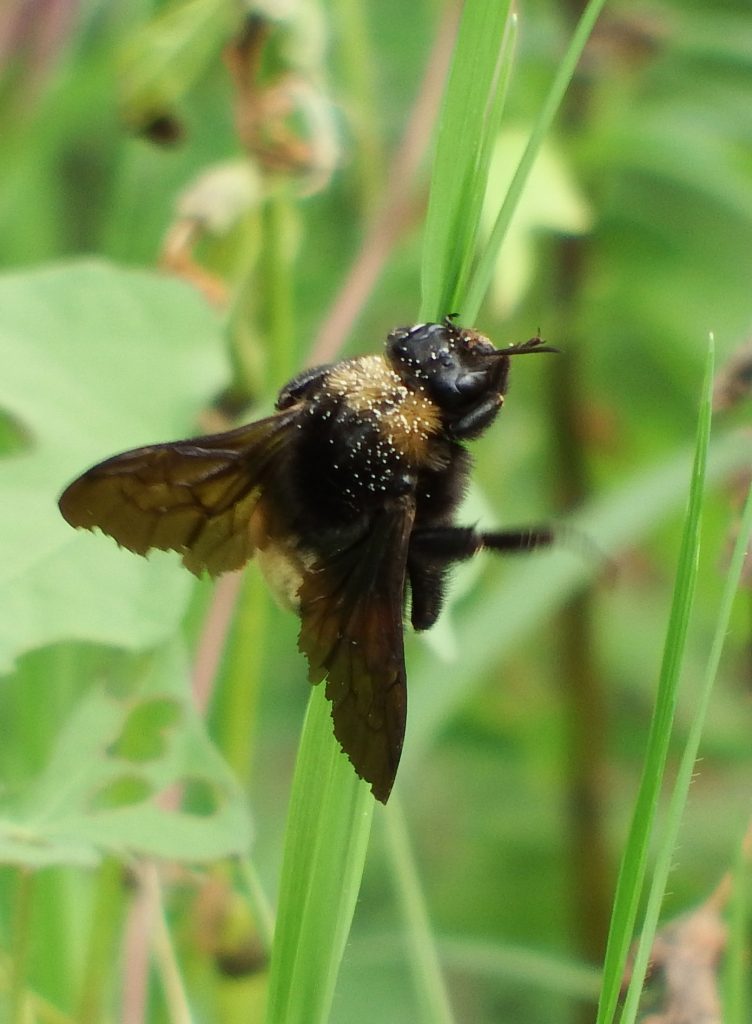
Bumblebee dusted with pollen from her recent efforts
JGG is easy to visit, with ample parking on Allen Parkway right there. It is definitely worth a visit. The parts with all the prairie plantings are towards downtown, around #13.


